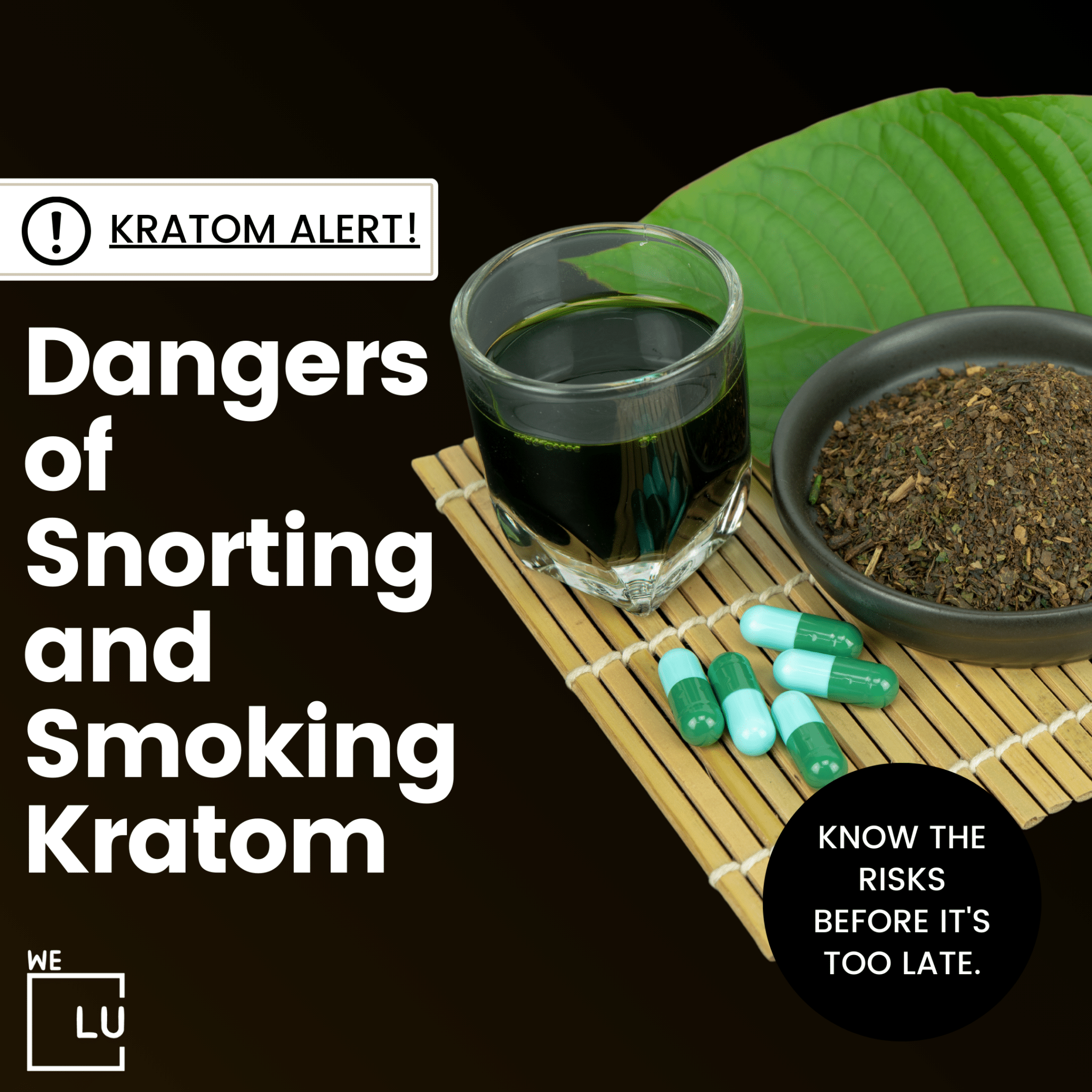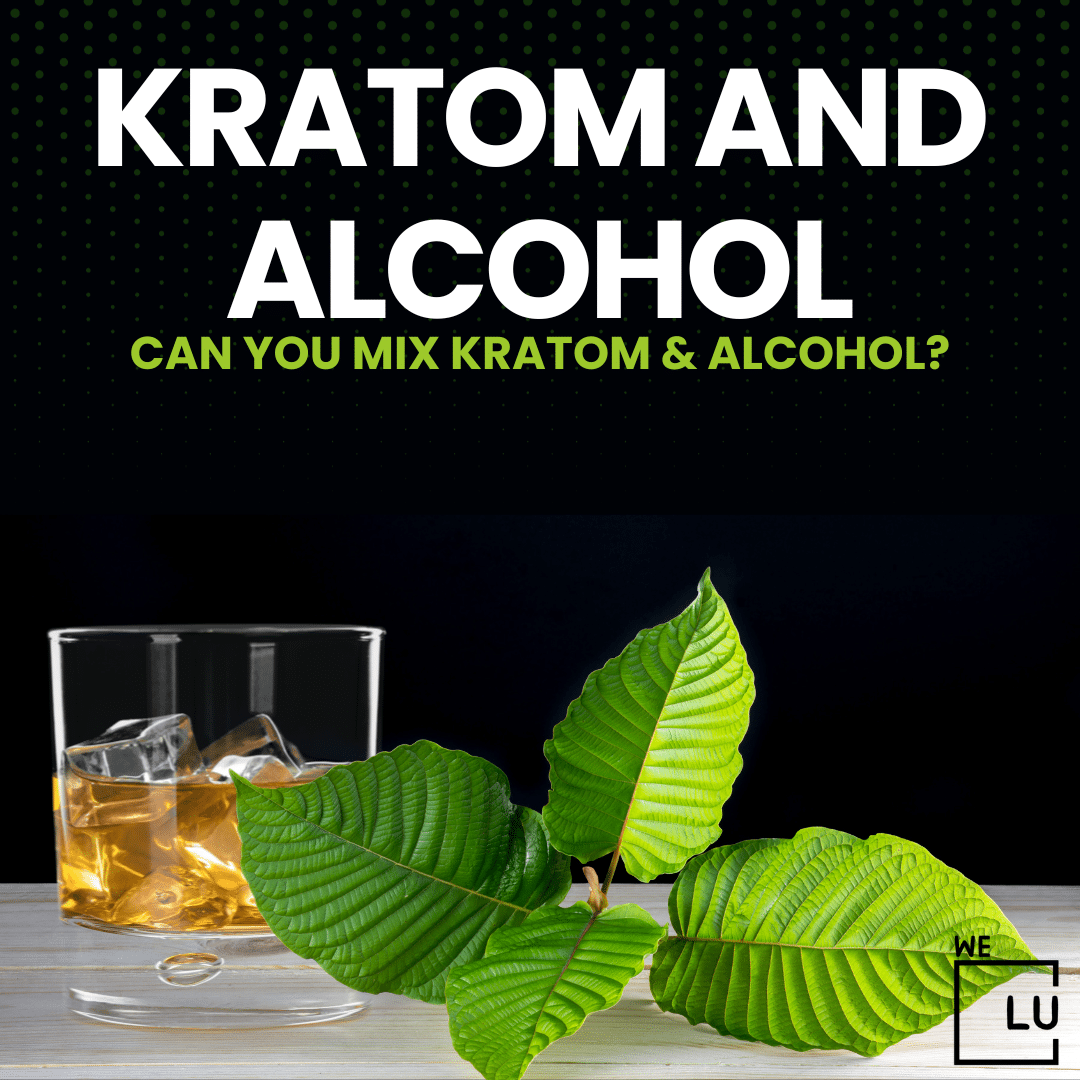Oxycodone Vs Oxycontin
Oxycodone and OxyContin are both medications used for the management of moderate to severe pain, and they share a common active ingredient: oxycodone. However, their differences lie in their formulations and how they deliver this opioid analgesic to the body.
Oxycodone
Oxycodone is a generic opioid analgesic commonly prescribed to alleviate various levels of pain intensity. It belongs to the class of medications known as opioid agonists, which work by binding to specific receptors in the brain and spinal cord, thereby altering the perception of pain. Oxycodone is available in immediate-release formulations, quickly absorbed into the bloodstream, providing rapid relief. Physicians often prescribe immediate-release oxycodone for short-term pain management, and patients may need to take it more frequently throughout the day to maintain its analgesic effect.
OxyContin
OxyContin, on the other hand, is a brand-name medication that also contains oxycodone but in an extended-release formulation. This means that OxyContin is designed to release oxycodone gradually over an extended period, typically around 12 hours. The extended-release feature is intended to provide a more sustained and consistent level of pain relief, allowing for less frequent dosing compared to immediate-release oxycodone. OxyContin is often prescribed for chronic pain conditions where continuous and long-lasting comfort is necessary.
Despite their effectiveness in managing pain, both oxycodone and OxyContin come with potential risks, including the risk of dependence, addiction, and other side effects. Individuals must use these medications only as a healthcare professional prescribes and be aware of the associated risks. Regular communication with healthcare providers is essential to monitor and adjust the treatment plan as needed to ensure the safest and most effective pain management.
Is Oxycodone The Same As Oxycontin
Oxycodone and OxyContin are related but not the same medications. Oxycodone is an opioid analgesic, which means it is a pain-relieving medication. OxyContin, on the other hand, is a brand name for a specific extended-release formulation of oxycodone.
The primary active ingredient in both medications is oxycodone. However, OxyContin is designed to release oxycodone gradually over an extended period, providing longer-lasting pain relief compared to immediate-release forms of oxycodone. This extended-release characteristic allows for less frequent dosing, typically every 12 hours.
Both medications have the potential for abuse, dependence, and addiction. Misuse of opioids can lead to serious health consequences, and they should only be used under the supervision and guidance of a qualified healthcare professional. If you have questions or concerns about these medications, it’s crucial to consult with your healthcare provider.
What’s The Difference Between Oxycodone and Oxycontin
The main difference between oxycodone and OxyContin lies in their formulations and how they release the active ingredient over time:
| Characteristic | Oxycodone | OxyContin |
|---|---|---|
| Type of Medication | Opioid analgesic | Extended-release formulation of oxycodone |
| Pain Relief | Provides relief from moderate to severe pain | It is designed to release oxycodone slowly over an extended period, usually around 12 hours |
| Formulation | Immediate-release formulations | Extended-release formulation |
| Release Mechanism | Medication is released into the bloodstream quickly | Intended to provide more consistent and prolonged pain relief, allowing for less frequent dosing |
| Duration of Action | Often prescribed for short-term pain relief and may need to be taken more frequently throughout the day | Intended to provide a more consistent and prolonged pain relief, allowing for less frequent dosing |
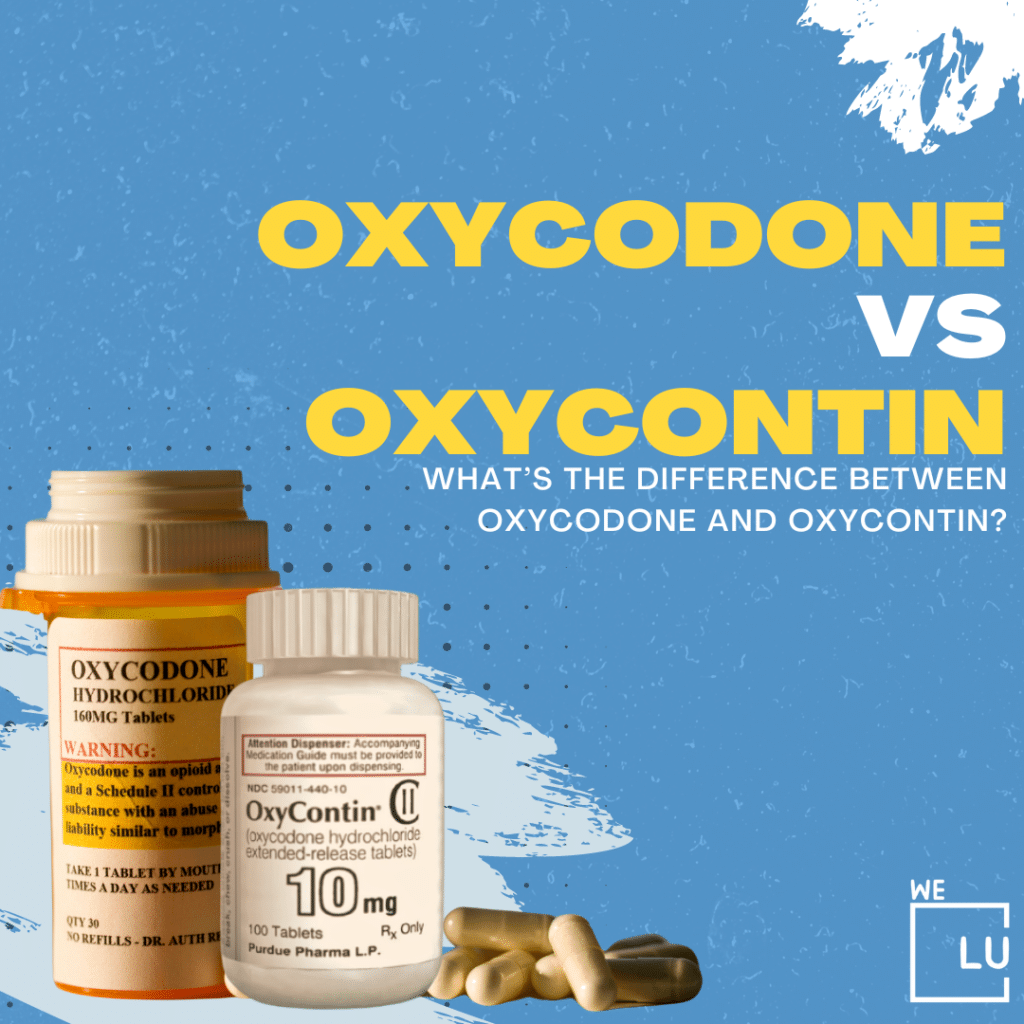
Skip To:
Learn More:

Get Your Life Back
Find Hope & Recovery. Get Safe Comfortable Detox, Addiction Rehab & Dual Diagnosis High-Quality Care.
Hotline (855) 695-1160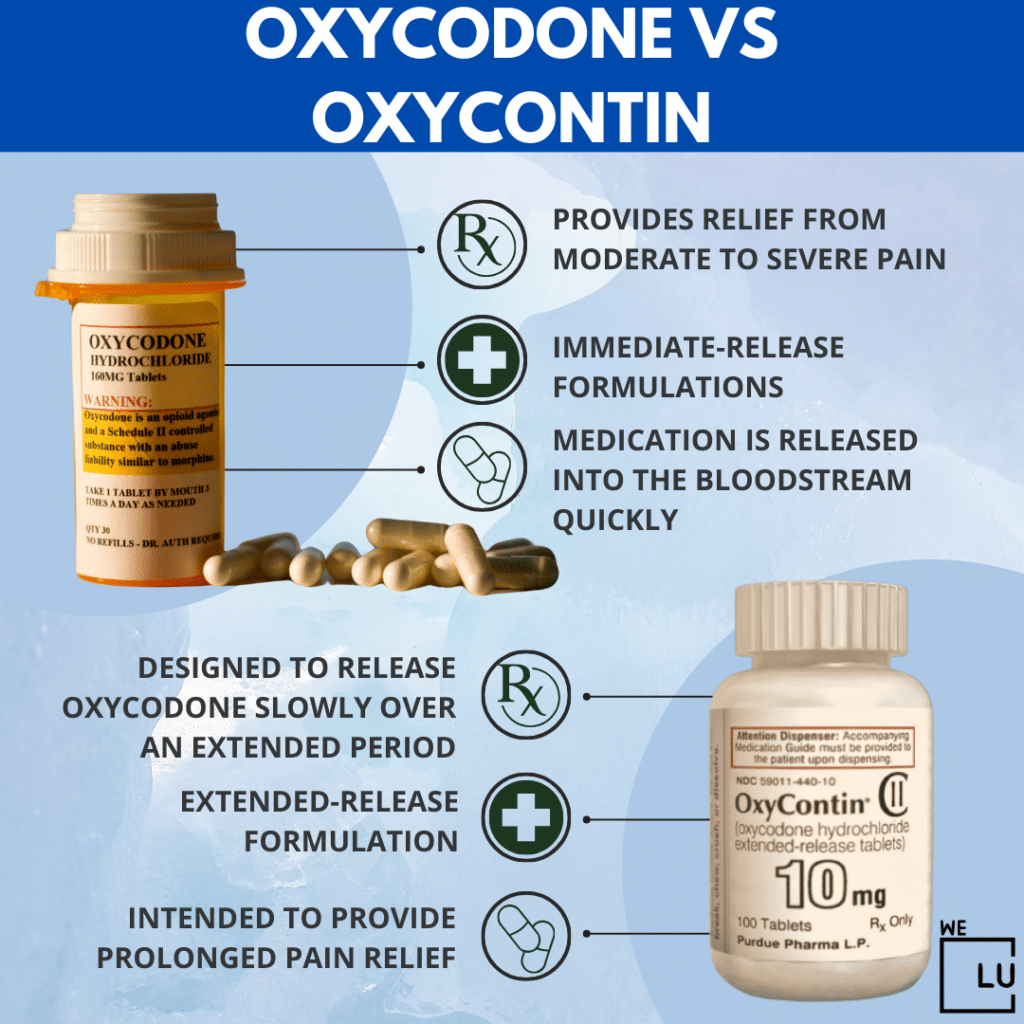
What Is Oxycodone
Oxycodone is a potent opioid analgesic, which means it is a medication primarily used for the relief of moderate to severe pain. It is classified as a semi-synthetic opioid derived from thebaine, an alkaloid found in the opium poppy plant. Oxycodone works by binding to specific receptors in the brain and spinal cord known as opioid receptors, ultimately altering the perception of pain.
Key points about oxycodone include:
- Pain Relief: Oxycodone is effective in managing various types of pain, ranging from acute post-surgical pain to chronic conditions like cancer-related pain.
- Formulations: It is available in various formulations, including immediate-release and extended-release forms. Immediate-release oxycodone provides quick pain relief but may need to be taken more frequently. At the same time, extended-release formulations, such as OxyContin, are designed to provide a more prolonged duration of action.
- Brand Names: Oxycodone is available under various brand names, and it is also marketed as a generic drug.
- Potential Risks: Like other opioid medications, oxycodone carries risks of side effects, including drowsiness, constipation, and respiratory depression. Additionally, there is a potential for misuse, dependence, and addiction.
- Prescription Only: Oxycodone is a prescription medication, and a qualified healthcare professional should supervise its use. Patients should follow their prescribed dosage and communicate regularly with their healthcare provider to manage pain effectively and monitor for any adverse effects.
Due to the potential for abuse and the opioid epidemic, healthcare providers are increasingly cautious when prescribing opioids, including oxycodone. They consider alternative pain management strategies and closely monitor patients for signs of misuse or dependence. It’s crucial for individuals prescribed oxycodone to be aware of its risks and benefits, use it only as directed, and seek medical guidance if concerns or side effects arise.
Effects of Oxycodone
Oxycodone is a potent opioid analgesic prescribed for the management of moderate to severe pain. Its effects include:
Therapeutic Effects:
- Pain Relief: Oxycodone binds to opioid receptors in the brain and spinal cord, diminishing the perception of pain.
- Improved Functioning: Effective pain management with oxycodone can enhance daily functioning and overall quality of life.
Side Effects:
- Sedation and Drowsiness: Oxycodone commonly causes sedation, leading to drowsiness and impairing alertness.
- Euphoria: Like other opioids, oxycodone can induce a sense of euphoria, contributing to its potential for misuse and addiction.
- Constipation: Opioids often result in constipation, a side effect that may require dietary adjustments or the use of laxatives.
- Nausea and Vomiting: Some individuals may experience nausea or vomiting as a side effect of oxycodone, which can be mitigated by taking the medication with food.
- Respiratory Depression: Oxycodone can depress the respiratory system, especially at higher doses, posing a serious risk if not closely monitored.
- Itchiness: Pruritus or itching is a mild but common side effect associated with opioids, including oxycodone.
- Tolerance and Dependence: Prolonged use of oxycodone may lead to the development of tolerance, requiring higher doses for the same effect, and physical dependence, necessitating careful management during discontinuation.
Get Help. Get Better. Get Your Life Back.
Searching for an Accredited Drug and Alcohol Rehab Centers in Near You?
Even if you have failed previously and relapsed, or are in the middle of a difficult crisis, we stand ready to support you. Our trusted behavioral health specialists will not give up on you. When you feel ready or just want someone to speak to about therapy alternatives to change your life call us. Even if we cannot assist you, we will lead you to wherever you can get support. There is no obligation. Call our hotline today.
FREE Addiction Hotline – Call 24/7What Is Oxycontin
OxyContin is a brand-name prescription medication that contains the opioid analgesic oxycodone. It is classified as an extended-release formulation designed to provide prolonged pain relief over an extended period. OxyContin is commonly prescribed for the management of chronic pain conditions that require continuous and around-the-clock relief.
As an opioid, OxyContin works by binding to specific receptors in the brain and spinal cord, modulating the perception of pain. Unlike immediate-release formulations of oxycodone, OxyContin is formulated to release oxycodone slowly over approximately 12 hours. This extended-release feature allows for less frequent dosing compared to immediate-release medications.
OxyContin is prescribed when a continuous and sustained level of pain control is necessary, such as in cases of severe arthritis pain or cancer-related pain. However, due to the opioid nature of OxyContin, it comes with inherent risks, including the potential for misuse, dependence, and addiction. Healthcare providers carefully assess the patient’s pain level, medical history, and risk factors before prescribing OxyContin, and they monitor patients closely during treatment to ensure its safe and effective use. It is crucial for individuals prescribed OxyContin to follow their healthcare provider’s instructions carefully, report any side effects, and communicate regularly to optimize pain management while minimizing risks.
Effects of Oxycontin
OxyContin, a brand-name medication, contains the opioid analgesic oxycodone and is known for its extended-release formulation. The effects of OxyContin are primarily aimed at providing prolonged pain relief for individuals dealing with chronic and severe pain. Here are the key effects of OxyContin:
- Pain Relief: OxyContin provides relief from moderate to severe pain by binding to opioid receptors in the brain and spinal cord, altering the perception of pain.
- Extended Duration of Action: The medication is formulated for extended-release, releasing oxycodone slowly over approximately 12 hours, allowing for less frequent dosing than immediate-release formulations.
- Improved Functioning: Effective pain management with OxyContin can enhance daily functioning, mobility, and overall quality of life for individuals with chronic pain conditions.
- Management of Chronic Pain: OxyContin is often prescribed for chronic pain conditions where sustained and consistent pain control is necessary, such as severe arthritis pain or cancer-related pain.
- Potential Side Effects: Like other opioids, OxyContin can cause side effects, including sedation, drowsiness, constipation, nausea, and itching. Awareness of these potential side effects is crucial, and they should be reported to healthcare providers.
- Risk of Dependence and Addiction: OxyContin carries a risk of dependence, tolerance, and addiction, particularly with prolonged use. Healthcare providers carefully assess patients for these risks and monitor their condition closely during treatment.
- Respiratory Depression: OxyContin, like other opioids, can depress the respiratory system, especially at higher doses. Monitoring respiratory function is crucial to prevent serious complications.
Individuals prescribed OxyContin should follow their healthcare provider’s instructions diligently, communicate regularly with their healthcare team, and be vigilant about potential side effects and risks associated with opioid use.
Comfortable Facilities & Amenities
High-Quality Addiction & Mental Health Rehabilitation Treatment
Rehab Centers TourRenowned California Addiction Center. Serene Private Facilities. Inpatient rehab programs vary.
Addiction Helpline (855) 695-1160Proven recovery success experience, backed by a Team w/ History of:
15+
Years of Unified Experience
100s
5-Star Reviews Across Our Centers
10K
Recovery Success Stories Across Our Network
- Low Patient to Therapist Ratio
- Onsite Medical Detox Center
- Comprehensive Dual-Diagnosis Treatment
- Complimentary Family & Alumni Programs
- Coaching, Recovery & Personal Development Events
Oxycontin and Oxycodone Overdose
OxyContin and oxycodone are both opioid medications, and an overdose on either substance can have severe and potentially life-threatening consequences. Both drugs contain the active ingredient oxycodone, which can lead to respiratory depression, sedation, and other adverse effects when taken in excessive amounts. It’s important to note that OxyContin is an extended-release formulation of oxycodone, while oxycodone can come in immediate-release formulations.
Symptoms of OxyContin and Oxycodone Overdose:
- Respiratory Depression: Shallow or slow breathing is a hallmark sign of opioid overdose. In severe cases, it can lead to respiratory arrest.
- Extreme Drowsiness or Unresponsiveness: Overdose can cause a profound soothing effect, leading to extreme drowsiness or loss of consciousness.
- Constricted Pupils: Opioid overdose can cause pinpoint pupils (very constricted pupils).
- Cold, Clammy Skin: Skin that feels cold and clammy to the touch may indicate an overdose.
- Blue or Purple Lips or Fingernails: Insufficient oxygenation can result in cyanosis, causing lips and fingernails to appear blue or purple.
- Vomiting: Nausea and vomiting may occur, potentially leading to aspiration.
- Confusion: Overdose can cause confusion, disorientation, and impaired cognitive function.
- Seizures: In some cases, an overdose may trigger seizures.
Treatment of OxyContin and Oxycodone Overdose:
- Naloxone Administration: Naloxone is an opioid receptor antagonist that can rapidly reverse the effects of opioid overdose. It is often administered in emergencies.
- Emergency Medical Attention: Immediate medical attention is crucial for someone experiencing an opioid overdose. Call emergency services (911 in the U.S.) right away.
- Supportive Care: In a medical setting, supportive care addresses symptoms and stabilizes the individual’s condition.
- Monitoring: Continuous monitoring of vital signs, including respiratory rate, is essential during and after naloxone administration.
Individuals taking OxyContin or oxycodone, as well as their caregivers, to be aware of the signs of overdose and to seek emergency medical attention promptly if an overdose is suspected. Prevention of overdose involves using these medications only as prescribed, not combining them with other substances that depress the central nervous system, and properly storing them to prevent unauthorized use.
World-class, Accredited, 5-Star Reviewed, Effective Addiction & Mental Health Programs. Complete Behavioral Health Inpatient Rehab, Detox plus Co-occuring Disorders Therapy.
CALL (855) 695-1160End the Addiction Pain. End the Emotional Rollercoaster. Get Your Life Back. Start Drug, Alcohol & Dual Diagnosis Mental Health Treatment Now. Get Free No-obligation Guidance by Substance Abuse Specialists Who Understand Addiction & Mental Health Recovery & Know How to Help.
Opioid Addiction
Opioid addiction, also known as opioid use disorder (OUD), is a chronic medical condition characterized by the compulsive use of opioids despite negative consequences and a strong desire to stop or cut down. Opioids are a class of drugs that include prescription medications like oxycodone, hydrocodone, and morphine, as well as illicit substances like heroin.
Key Aspects of Opioid Addiction
- Physical Dependence: Opioids can lead to physical dependence, where the body adapts to the presence of the drug. This can result in withdrawal symptoms when opioid use is reduced or stopped.
- Tolerance: With prolonged opioid use, individuals may develop tolerance, requiring higher doses to achieve the same effects. Tolerance contributes to the risk of overdose.
- Behavioral and Psychological Aspects: Opioid addiction involves not only physical dependence but also behavioral and psychological components. Individuals with opioid addiction often engage in compulsive drug-seeking behaviors.
- Cravings: Intense cravings for opioids are a common feature of addiction. Stress, environmental cues, or exposure to opioids can trigger cravings.
- Social and Functional Impairment: Opioid addiction can lead to social and occupational impairment. Individuals may neglect responsibilities, experience strained relationships, and have difficulties maintaining employment or meeting family obligations.
- Health Consequences: Opioid addiction is associated with various health risks, including an increased risk of infectious diseases (such as HIV and hepatitis), respiratory depression, and overdose.
- Treatment Options: Treatment for opioid addiction often involves a combination of medication-assisted treatment (MAT) and behavioral therapy. Medications like methadone, buprenorphine, and naltrexone can help reduce cravings and withdrawal symptoms.
- Supportive Therapies: Behavioral therapies, counseling, and support groups are essential treatment components. They address the psychological aspects of addiction and help individuals develop coping strategies.
- Harm Reduction: Harm reduction strategies, such as the distribution of naloxone (Narcan) to reverse opioid overdoses, play a crucial role in preventing fatal outcomes.
- Long-Term Management: Opioid addiction is often a chronic condition, and long-term management is necessary for sustained recovery. This may involve ongoing medication, counseling, and support services.
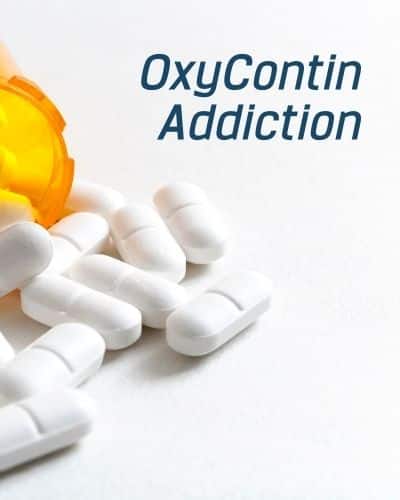
Opioid Addiction Prevention
Preventing opioid addiction involves responsible prescribing practices by healthcare providers, educating the public about the risks of opioids, promoting non-opioid pain management alternatives, and implementing strategies to reduce the availability of illicit opioids.
It’s important to approach opioid addiction as a medical condition that requires comprehensive and compassionate care. Early intervention and access to effective treatment can significantly improve outcomes for individuals struggling with opioid addiction.
Experience Transformative Recovery at the We Level Up California Treatment Center.
See our authentic success stories. Get inspired. Get the help you deserve.



Start a New Life
Begin with a free call to an addiction & behavioral health treatment advisor. Learn more about our dual-diagnosis programs. The We Level Up treatment center network delivers recovery programs that vary by each treatment facility. Call to learn more.
- Personalized Care
- Caring Accountable Staff
- World-class Amenities
- Licensed & Accredited
- Renowned w/ 100s 5-Star Reviews
We’ll Call You
“This Was Not How I Wanted To Live”, Ryan’s Recovery From Fentanyl, Heroin, & Oxycontin Addiction
Search We Level Up CA Oxycodone vs Oxycontin Drug & Alcohol Rehab / Detox & Mental Health Topics & Resources
Sources
- Drug Enforcement Administration. “Oxycodone.” April 2020.
- DEA – Oxycodone – https://www.dea.gov/factsheets/oxycodone
- MedLine Plus – Oxycodone – https://medlineplus.gov/druginfo/meds/a682132.html
- FDA – Oxycontin Label – https://www.accessdata.fda.gov/drugsatfda_docs/label/2008/020553s059lbl.pdf
- Opioid addiction – U.S. National Library of Medicine (medlineplus.gov)
- Sadiq NM, Dice TJ, Mead T. Oxycodone. In: StatPearls [Internet]. Treasure Island (FL): StatPearls Publishing; 2023 Jan-. Available from: https://www.ncbi.nlm.nih.gov/books/NBK482226/ related: Oxycontin Vs Oxycodone, Difference Between Oxycontin And Oxycodone, Is Oxycontin The Same As Oxycodone, What’s The Difference Between Oxycontin And Oxycodone, What Is The Difference Between Oxycodone And Oxycontin, Is Oxycontin And Oxycodone The Same drug, Oxycodone Same As Oxycontin, What Is The Difference Between Oxycontin And Oxycodone,
- Cohen B, Ruth LJ, Preuss CV. Opioid Analgesics. [Updated 2023 Apr 29]. In: StatPearls [Internet]. Treasure Island (FL): StatPearls Publishing; 2023 Jan-. Available from: https://www.ncbi.nlm.nih.gov/books/NBK459161/ related: Oxycontin Vs Oxycodone, Difference Between Oxycontin And Oxycodone, Is Oxycontin The Same As Oxycodone, What’s The Difference Between Oxycontin And Oxycodone, What Is The Difference Between Oxycodone And Oxycontin, Is Oxycontin And Oxycodone The Same drug, Oxycodone Same As Oxycontin, What Is The Difference Between Oxycontin And Oxycodone,
- Chou R, Hartung D, Turner J, et al. Opioid Treatments for Chronic Pain [Internet]. Rockville (MD): Agency for Healthcare Research and Quality (US); 2020 Apr. (Comparative Effectiveness Review, No. 229.) Available from: https://www.ncbi.nlm.nih.gov/books/NBK556253/ related: Oxycontin Vs Oxycodone, Difference Between Oxycontin And Oxycodone, Is Oxycontin The Same As Oxycodone, What’s The Difference Between Oxycontin And Oxycodone, What Is The Difference Between Oxycodone And Oxycontin, Is Oxycontin And Oxycodone The Same drug, Oxycodone Same As Oxycontin, What Is The Difference Between Oxycontin And Oxycodone,
- National Academies of Sciences, Engineering, and Medicine; Health and Medicine Division; Board on Health Sciences Policy; Committee on Pain Management and Regulatory Strategies to Address Prescription Opioid Abuse; Phillips JK, Ford MA, Bonnie RJ, editors. Pain Management and the Opioid Epidemic: Balancing Societal and Individual Benefits and Risks of Prescription Opioid Use. Washington (DC): National Academies Press (US); 2017 Jul 13. Available from: https://www.ncbi.nlm.nih.gov/books/NBK458660/ doi: 10.17226/24781
- Zullo AR, Danko KJ, Moyo P, et al. Prevention, Diagnosis, and Management of Opioids, Opioid Misuse, and Opioid Use Disorder in Older Adults [Internet]. Rockville (MD): Agency for Healthcare Research and Quality (US); 2020 Nov. (Technical Brief, No. 37.) Available from: https://www.ncbi.nlm.nih.gov/books/NBK564144/



